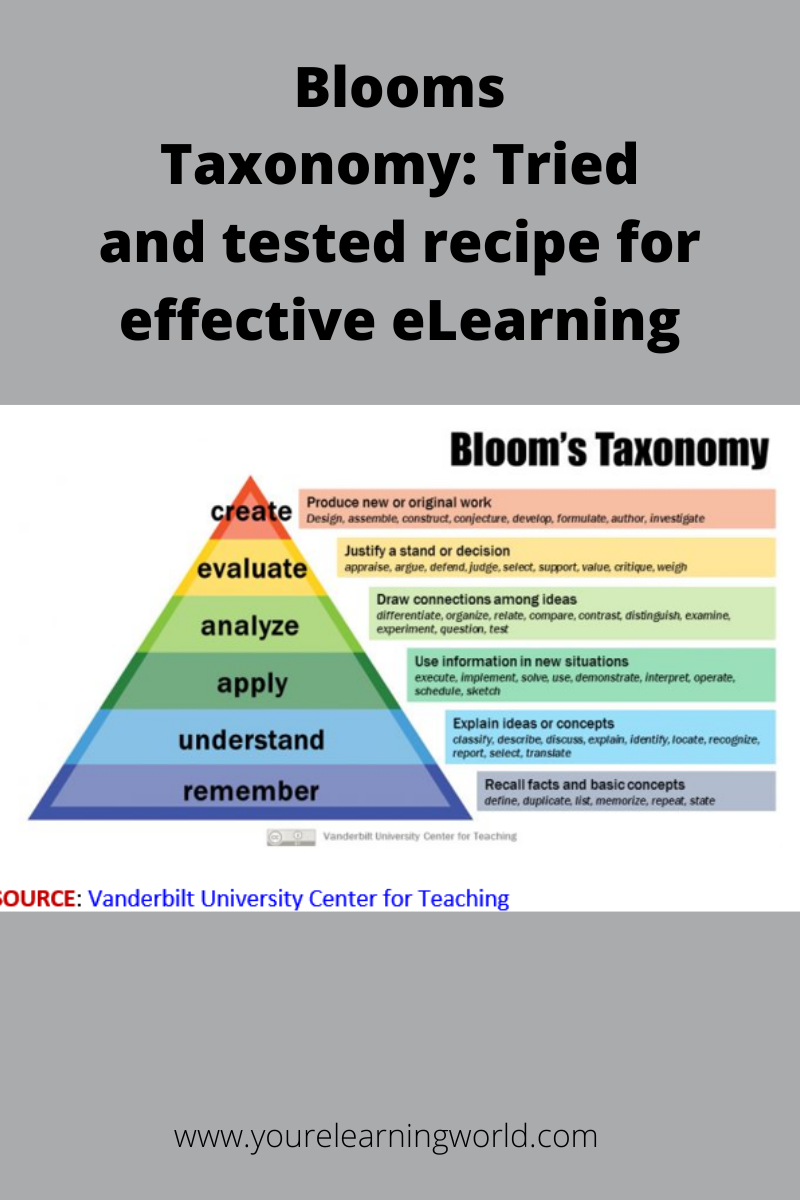Bloom’s Taxonomy was created in 1956, by educational psychologist Dr. Benjamin Bloom, and subsequently updated in 2001 to its current form. It is based on hierarchical ordering of learner’s cognitive skills, which then facilitates learning professionals (L&D) and Instructional Designers (ID) in helping learners learn better. To help instructors and course developers understand how to achieve their learning objectives, the taxonomy breaks down human thinking skills into six categories, ascending as a pyramid from lower to higher-orders of thinking. Using Bloom's Taxonomy Understanding Bloom’s Taxonomy can play a vital role in helping eLearning professionals create highly effective learning objectives; organize learning into logical structures to help make learning a seamless process; inject focused interactivity into courses; and design course assessments that truly evaluate whether learners have mastered desired learning objectives. Here are some strategies and tips to help … [Read more...] about Blooms Taxonomy: Tried and tested recipe for effective eLearning
Bloom's Taxonomy revised
How to Apply Revised Bloom’s Taxonomy to ELearning Courses
Oftentimes, when instructional designers are tasked with designing a course, one of the challenges that they face has to do with the design approach they take. While experienced instructional designers seem to have a better grasp of this, novices often struggle with selecting the right activities and exercises that truly reinforce learning. One of the best (and probably easiest) approaches to figure out the activities for the course is to use Bloom’s Taxonomy. Since Bloom’s taxonomy was created for traditional classroom training, there was a need to reconstruct it to fit modernized approaches to training. Therefore, in 2009, the Taxonomy was repackaged to reflect current needs. In this blog post, I want to take a brief look at the repackaged Taxonomy, and see how instructional designers can apply it to their eLearning and Blended learning courses. The best way to use Bloom’s taxonomy is to use the content of the course to develop measurable learning objectives. Then, categorize … [Read more...] about How to Apply Revised Bloom’s Taxonomy to ELearning Courses


